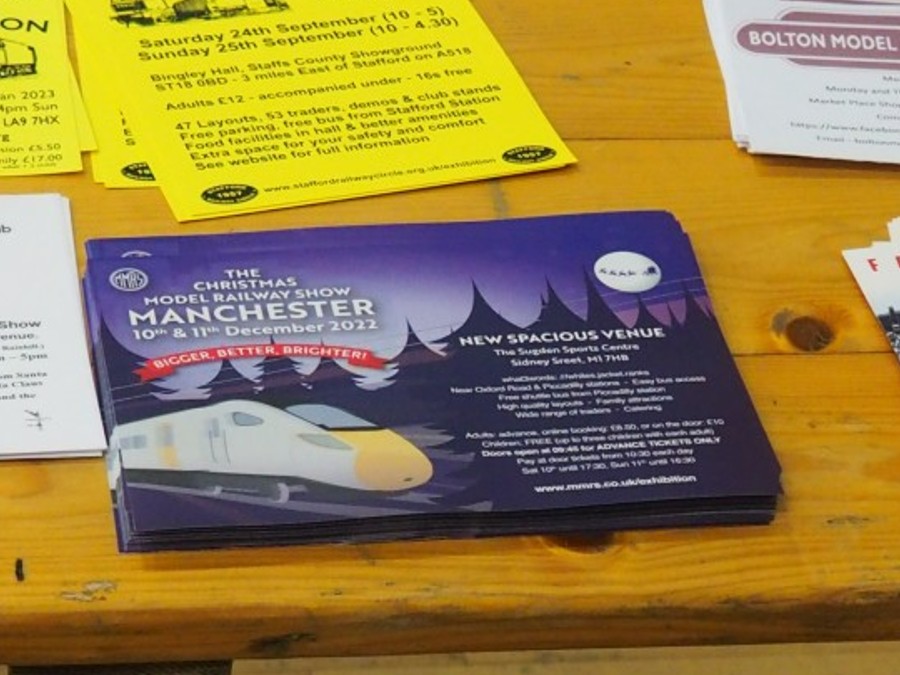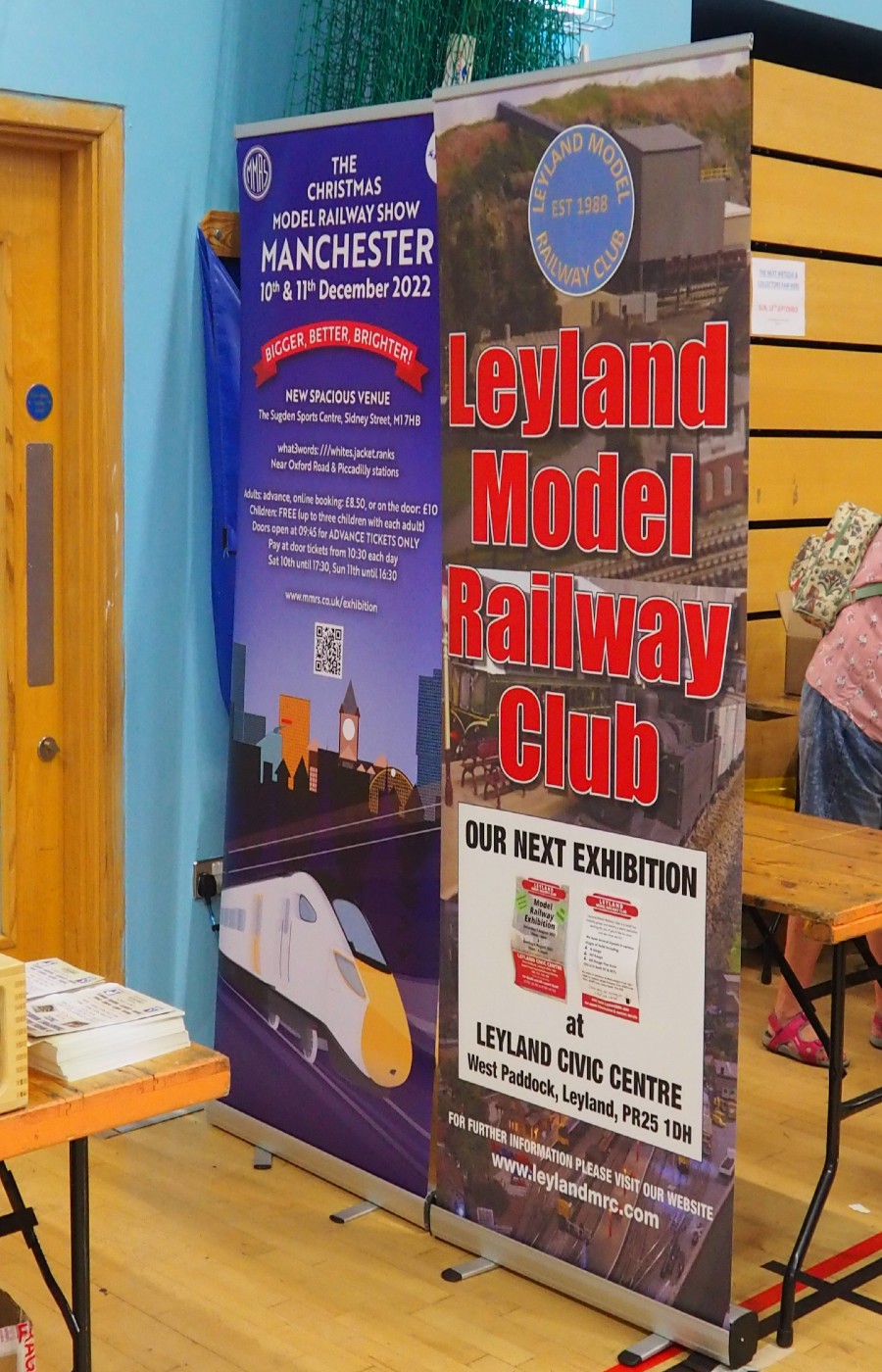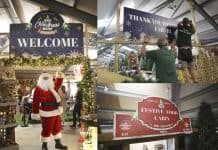Since the late 19th century, model trains have been desired by kids all over the world. Lockdown in 2020 saw many people, young and old, rekindle or discover a passion for their model railway.
Being the third oldest model train society in the world, the Manchester Model Railway Society didn’t need lockdown to rediscover its love for train modelling.
We spoke to Philip Sweet from the society to see how print remains the fuel that keeps them on track.
The inside track: Manchester Model Railway Society
Founded in 1925, the Manchester Model Railway Society at present has about 140 members, including two enthusiasts living abroad!
Groups of about a dozen members gather weekly in Sale, Southwest Manchester, to socialise, build and plan, especially now it’s full steam ahead for their annual exhibition.
Philip Sweet, the society’s exhibition manager, has been a member for 15 years. When he came to Solopress for help with their 83rd public show, Philip’s pride and passion for his society were palpable.
Track record
Model trains were first documented in 1859, with the Chemin de fer du Prince Imperial built for Emperor Napolean III’s son. It was a clockwork set which resided in Chateau de Saint-Cloud, Paris.
Model trains became commercial in the late 19th century and have been a staple of any child’s Christmas list ever since. Originally, they were made from tin, lead or wood.
Unpowered floor pull trains were brought to market in Germany by the Märklin brothers, who rather astutely saw them as the perfect gift for under a Christmas tree.
Wind-up, or more technically known, clockwork models became the next advancement in model train making in 1891.
An expensive habit
1895 saw Märklin produce their first electric model which was powered on 50 volts of electricity, supplied from a 220 volt main. At this time, most cities didn’t even have electrically operated trains, let alone electric models.
In the UK, the predominant model rail company was Bassett-Lowke, They were founded in 1899 and produced clockwork models that were fairly accurate but very expensive. For operating, their models required a space far larger than most families had available.
This goes to show, that because of the cost and the space needed, originally model train collecting was the preserve of the wealthy.
Philip explained: “Since they were so expensive, many ordinary people couldn’t buy model trains.”
In 1910, the world’s first club for enthusiasts was founded in London, The Model Railway Club.
However, the First World War intervened and it was not until late 1924 that the second club was founded in Wimbledon.
Several weeks later, Wimbledon was followed by the Manchester Model Railway Society. Philip said: “Wimbledon suspended their meetings during WW2 but we didn’t!”
Into the golden years
After World War One, there was little desire to buy German products, such as Märklin’s models. This opened the door for Hornby, who were first introduced in 1920, much to the detriment of many parents’ bank accounts! Tri-ang joined in about 10 years later and both of these new companies produced models to a new “OO” scale in 1920,
Post Second World War, Hornby Dublo became the dominant range. This set was electric only, with clockwork models now being aimed towards young children. Hornby is now Britain’s leading model railway manufacturer and celebrated its 100th anniversary during the coronavirus pandemic.
Hornby excelled in a crowded market due to their attention to detail. They placed great emphasis on materials, paint and finish, though they were more expensive than Tri-ang.
By the 1950s, toy trains became the most popular gift for young boys as train modelling grew internationally.
In the last thirty years, the standards achieved by Hornby, Bachmann and the other modern manufacturers would astonish modellers of the “Golden Age”.
An eye for detail
Philip and the rest of the Manchester Model Railway Society’s attention to detail have been a key factor in keeping the Society going for as long as it has.
He said: “The driving force in maintaining the society for so long has been the very obsessive traits that are needed to make and build these intricate train models!
“We have been pushing the boundaries of accuracy within train modelling to make our exhibits as realistic as possible.”
He added: “Our society is perfect for the enthusiast that wants to go to the highest degree of accuracy possible!”
Models and scenery are created with computer-aided design (CAD) and produced through 3D printing, with card now being laser cut.
Going underground
This year marks a return for the Manchester Model Railway Society’s annual exhibition after the covid-19 pandemic stopped them in their tracks for the last two years.
Their last show, in 2019, attracted 3,700 modellers and train enthusiasts to Manchester. Philip estimated that 7% of visitors to their exhibitions travel over 100 miles.
He said: “People travel far and wide to come to our exhibition because it’s so well regarded. Those who come to our exhibitions can expect to see a wide array of models from all over the country. This year, for example, 5 of the 25 layouts present will have travelled over 200 miles to take part. Additionally, two of the layouts are being seen in public for the first time.”
Print comes top!
During that show, the society’s questionnaire revealed their audience saw print as the most cost-effective marketing tool.
As a result, Philip ordered 10,000 Flyers and Leaflets to promote Manchester Model Railway Society’s return to exhibitions and has since ordered a further 15,000 to distribute to enthusiasts around the country.
He added: “I was extremely impressed with Solopress. They turned my artwork into stunning leaflets and they arrived within 24 hours of ordering!”
Accompanied by Roller Banners and A4 Posters, this year’s exhibition is full-steam ahead now!
Back on track
This December will see the Manchester Model Railway Society get back on track and host its first exhibition in three years.
They’re expecting to see between 3,500 and 4,000 modellers, enthusiasts and novices embark on a journey of nostalgia.
In their 83rd public exhibition, Philip highlighted two potential issues they’re facing:
“After two years off, we face two sticking points. We need to tell people our exhibition is returning and where our new, larger city centre venue is.
“That’s why Solopress’ Flyers have been so essential to us!”
In the fast lane
Popular TV series “The Great Model Railway Challenge” gave train modelling a larger, more televised platform to be seen on.
This, combined with several high-profile modellers such as Sir Rod Stewart, Jools Holland, record producer Pete Waterman and TV presenters Peter Snow and Anne Diamond, have all raised the profile of railway modelling in recent years.
Hornby noticed a rise in new and old model train enthusiasts emerging through the pandemic. Lockdown inspired many modellers to rediscover their passion or infect younger generations with their hobby.
Often viewed as a later life hobby, trains have seen an injection of youth over recent years. There has been a meteoric spike in popularity on social media. This has largely been down to the viral Tik Tok trainspotter, Francis Bourgeois.
Bringing classic trains, trainspotting and locomotive history mainstream, Francis has put his passion firmly in the spotlight. He’s filmed his hobby alongside stars like Thierry Henry and has partnered with brands such as Gucci and The North Face.
This injection of youth is perfect for model railway clubs, like Philip’s, to keep them running into their second century.
A 100-year track record
2025 will see the Manchester Model Railway Society celebrate 100 years of modelling.
With a couple of years to prepare, Philip assured us that organisation is well underway, for their centenary exhibition.
He said: “As well as our usual mix of very high-quality layouts, there will be a timeline display showing off train models throughout the years.
“We’re planning to bring in several older, fragile but historically significant models, with some being 90 years old! But we’ll also bring some of the most special, up-to-date models available, some of which we haven’t shown to the public before!”
To encourage the continued injection of youth, children can attend for free at all the MMRS exhibitions.
Youth remains a powerful element of train modelling. Philip noted that most members like to build models of trains they remember from when they were younger.
Passion and expertise
He emphasised how the club and their exhibitions are made and operated by amateurs with a burning passion for modelling.
Manchester Model Railway Society has built incredibly detailed models over the years. Understandably, you’d think that labelling the society as amateurs was a disservice to their dedication.
We think experts is a more fitting title.
If you’re looking for experts with an equal burning passion for print, Solopress will cover all your printing needs.















